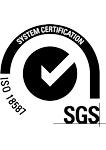Science makes the world go round and words do too. Have you ever thought about how long it would take you to travel from Bilbao to Valencia if it were not for robotics, mechanics and aeronautics, among others? Many people believe that politics rules the world but they are wrong. It is ruled by researchers and scientists. If it were not for their discoveries, man might still be living in prehistoric times.
Without scientific and technical translation, half of the world’s population would still not know what a microwave is, what penicillin is or that plants can be genetically altered to make them more resistant to climate change
What is technical translation?
There are a huge number of different subject areas within what we understand as technical translation. In our post today we are going to talk about translations related to the fields of engineering, architecture, construction and industrial areas, such as assembly manuals, machinery instructions, leaflets describing technical parts, description of engineering or construction projects, etc.
A little history
Since the 15th century, the invention of the printing press, the rise of telecommunications and the arrival of the digital era have facilitated the transmission of knowledge, both at a national level and at an international level. This has made it possible to develop increasing specialization and for technical translation to appear. Schools and research groups are created, and new scientific and technological fields and subdisciplines are developed at a heightened and almost dizzying pace today. As a result, the need for increasingly specialized communication has risen and there are new concepts requiring new names, which means that there’s a need to create technical or specialized vocabulary.
Scientific translators have had a huge impact on the creation of specialized vocabulary by creating terms and importing them from other languages. Over time, many of these have entered common use. Some examples are Germanisms in the field of war (war, glove, helmet, spur, shell) or to chemistry (cobalt, wolfram, quartz, nickel), Gallicisms in the field of fashion (batiste, beige, boutique, corset, gabardine), wine (bouquet, champagne, sommelier), gastronomy (chef, menu, gourmet, ham, fillet, croquette, soufflé, entrecôte, crepe) and tourism (souvenir, tour, hotel) and the countless Anglicisms in fields such as computing or finance.
What’s more, it’s worth pointing out that international relations, both political and cultural as well as economic, have intensified, thanks to modern means of transport by air, sea and land. International trade involves overcoming language barriers, which is why technical translation has become one of the translation specialties most in demand.
Characteristics
Technical language is a subset of language, with partial matches to common language but with specific uses for a certain area. Some linguistic features of this language are objectivity: in general, this type of text has an informative or explanatory function; but above all, texts must be objective and clear. Technical terms must be precise so that we can quickly associate the term with the reality it describes, thus avoiding any ambiguity.
Terminological consistency: within a certain piece of text, terminological consistency must always be maintained. This means that, even if we can’t quite decide on whether to use one term or another, what we mustn’t do is switch between them throughout the text, as this will only cause confusion among readers. It can happen that a term doesn’t have an equivalent one in the target language, which means that the translator will have to search for an alternative to address the issue. This may involve using a loanword, neologism or—if all else fails—attempt to provide an explanation of the term. In any case, it must be a sound solution that cannot be taken lightly, as technical language is quite strict and it is not a good idea to have an abundance of terms that are wrong or that lead to confusion. There are bodies that regulate products and services at a national level and at an international level (AENOR, ISO, etc.) where we can find references to terms that can be very useful when translating a text, or also in documentation work.
Accuracy: the use of unnecessary words that make the text sound more pretentious and even confusing must be avoided.
Logical style: generally speaking, the way in which texts are drafted varies depending on the language involved. This is why one of the translator’s tasks is deciding which is the appropriate manner to draft a text in a certain language: whether to use the active or passive voice, whether to use the formal or informal address, etc.
Despite the existence of general guidelines on how to create technical documentation, they are still relatively unknown, which is why modern machine translation technologies have had little impact on technical writing. We are positive that the great benefits they can bring will soon make companies aware of the need to optimize texts for their subsequent translation, whether by computer-assisted translation systems or professional translators.
Each text deals with a highly specialised area and each field has its own specific language. This means that they use different terminology and even different styles or drafting rules. That is why these jobs should be carried out by a native specialist technical translator. The professional who is performing this type of translation must fully master the area they are translating, be an expert in the field and, if possible, work alongside a specialist in the sector to guarantee the quality of their translations.
One issue to bear in mind is that new developments in the area of technology take place very quickly, which means that translators must always have up-to-date knowledge. If you are looking for a translator or a translation agency and they offer you the same price for translations regardless of whether they are general or technical you should be very suspicious. That is why it is important to check the experience of the translator, since a mistake in a technical translation can have serious consequences.
Saving companies
Technical translation helps companies to expand internationally in many different ways. From technical documents and user manuals to patents, everything must be translated when selling products abroad. Technical translation is a must if your company is to meet the requirements of international markets. What’s more, this type of professional translation could save the following industries in 2021. Read on to find out why!
1. Fintech
The pandemic has accelerated the growth of financial technology as more people have been forced to use online payments. The sector has expanded across international markets with the clear intention of providing fairer access to financial services. Almost 1.7 billion people need fintech solutions to pay for goods and services without a bank account.
Companies in the fintech industry need to speak the local language to gain people’s trust. At the same time, to comply with the law they also need to provide complicated technical documents in all these languages. The more the fintech companies grow, the greater the interest local governments have in imposing specific laws that require technology companies to provide comprehensive information about their services in the local languages.
2. Blockchain
The blockchain industry is much more than just Bitcoin and cryptocurrencies, as it is used in many industries and has an impressive growth potential. The blockchain industry is expected to reach $39.7 billion by 2025. As more governments work on creating blockchain strategies to simplify operations and reduce bureaucracy, the market is creating endless possibilities for blockchain companies and developers.
3. Software as a Service (SaaS)
By 2021, 73% of global companies will have implemented SaaS solutions to improve their efficiency. Most of them are looking for providers that work across multiple languages to ensure the same user experience for multilingual employees and international teams.
Technical translations are an essential part of any SaaS project in global companies. Businesses hoping to attract new customers need to offer the best quality products and services in all the languages spoken by their multinational customers.
SaaS translation is vital for companies looking to turn their products into global solutions that solve problems and become market leaders in their respective business sectors.
4. Logistics
The logistics industry could reach a staggering $1 trillion by 2021, but that won’t happen without technical translation. As sustainability becomes the main concern in this sector, companies will have to collaborate globally to keep up with the new expectations of this market.
As you can see, technical translation is a really difficult job and it is not a good idea to leave it to automatic translation. If you do, we could have CD instructions that when trying to explain how to eject a CD talk about “emergency ejaculation” or laundry labels that instead of “hand wash” tell us to “wash hand”, meaning that your hands would be very clean but not much else. While these translations might make you smile, they are not exactly good technical translations.













